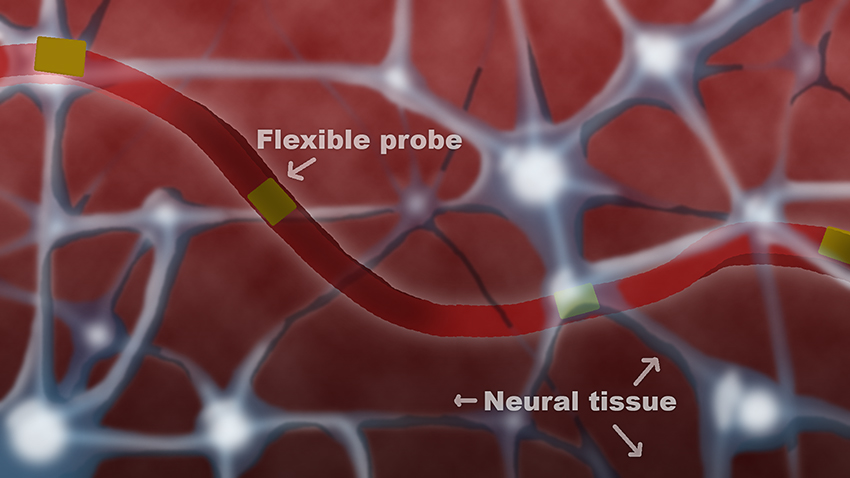A new brain probe developed by UT researchers allows for reliable, long-term recording of brain cells.
Chong Xie, biomedical engineering assistant professor, and physics research scientist Lan Luan recently created a probe that is one one-hundredth the width of a human hair and 1000 times more flexible than existing brain probes.
Xie said these probes can be used to complete long-term studies of strokes and neurological diseases such as Parkinson’s and Alzheimer’s.
“The current (brain) probes have a couple of drawbacks: They are not able to distinguish whether they are recording from the same neuron, and over time they cause scar tissue formation,” Xie said.
In experiments with mice, the ultra-flexible probe recorded reliable, distinctive electrical signals from different neurons, or brain cells, without damaging or scarring the brain.
“We were able to record (a mouse that) was implanted in November 2015, and we checked a month ago, so it has been more than a year and the probe is still … working fine,” Xie said.
Xie said the brain probe is not damaging because it’s designed to mechanically resemble another neuron. He said the level of force needed to bend the brain probe is the same force needed to move a single neuron.
“This means (that) all the surrounding cells, they don’t see a hard rigid foreign body anymore; they feel mechanically like they’re just pushing their peer cells,” Xie said.
Lan said the probes’ design is good for clinical applications because it doesn’t significantly disturb the neurons and tissue in the brain.
The researchers are using the brain probe to study strokes and the electrical activity of neurons when there is poor blood flow to the brain. Xie said his team is working with Andrew Dunn, a biomedical engineering professor who studies blood flow in the brain.
“With (the brain probe), we can look at the electrical activity of neurons together with Dunn’s [blood flow] imaging technology, and we can see how much influence blood flow has to neural activity and vice versa,” Lan said.
Xie said the limited life spans of lab mice prevent long studies. He added that the next step is testing the brain probes in humans to see if they can reliably track the same neurons for over a year.
The team is working with Robert Buchanan, chief of neurosurgery at Seton Medical Center and a psychology and neuroscience associate professor, to explore clinical applications of these probes.
Buchanan said the future of treating neurological diseases will involve using brain probes to stimulate these diseases via drug delivery or electrical impulses.
“(Now) we have probes that could deliver and measure things without being covered by scar, and that is a game-changer,” Buchanan said.
This method will also allow researchers to understand the long-term neurological mechanisms of the brain, especially with progression of diseases such as strokes, Parkinson’s and Alzheimer’s, Buchanan said.
“We understand about 1 percent of how the brain functions — we don’t even understand how the brain communicates to itself,” he said.















